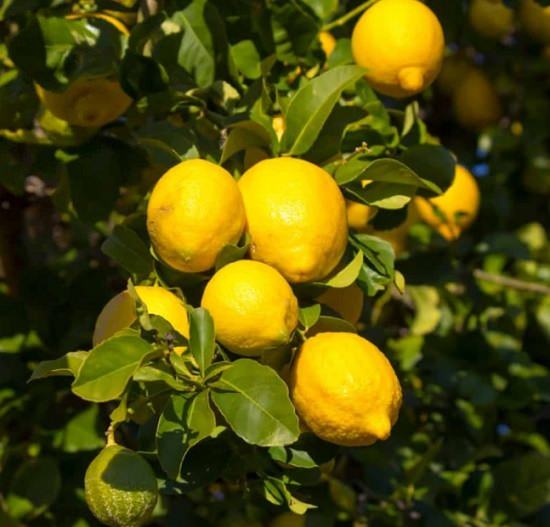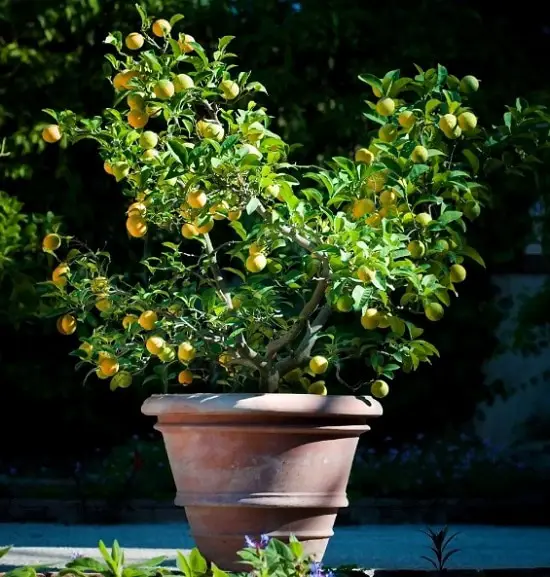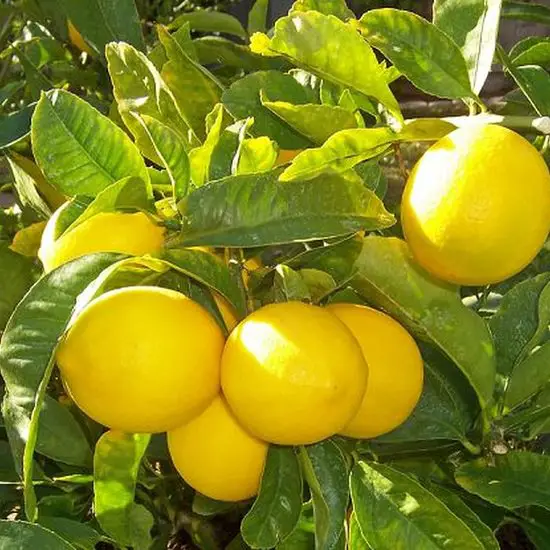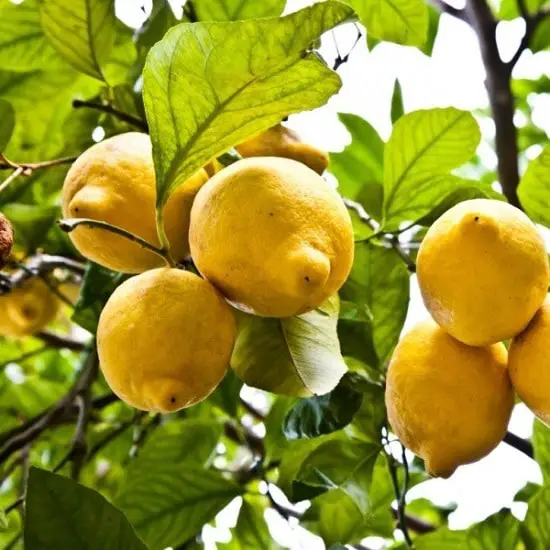Growing a lemon tree is easy if you know about the variety. Learn about the best Types of Lemon in California and have tangy flavor in your dishes!
The fragrant and ornamental lemon trees can be a focal point of any garden! You can also grow them indoors if you know the right cultivar. Learn about the best Types of Lemon in California as the temperature goes up there to the range of 100 F (37 C).
Check out our article on growing a lemon tree in a container here!
Types of Lemon in California
1. Eureka Lemons

Botanical Name: Citrus x Limon ‘Eureka.’
Hardiness Zone: 9-10
Special Traits: Produces fruit whole year
Mature size: Up to 15-20 feet tall
The majority of the Eureka lemon crops are grown in California, Israel, and Australia though they are endemic to Sicily. These citrus fruits are true lemons, as they are not the product of any hybridization. If the temperature goes less than 20 F (-6 C), it can cause damage to the Eureka lemon tree, so, bring it indoors if the temperature drops.
You can also grow them on raised beds or in a sturdy container, as dwarf varieties are available. Grow them in an area where the plant gets full sunlight of 10-12 hours, in moist soil. They need regular watering in dry, hot days. As the Eureka lemons do not have a dormancy period, they can produce fruits the entire year. They have yellow-green color but develop a bright lemon yellow shade when ripe.
2. Pink Variegated Lemon Tree

Botanical Name: Citrus x Limon ‘Eureka Variegated Pink.’
Hardiness Zone: 9-10
Special Traits: Pink fleshed lemons
Mature size: Up to 12-15 feet tall
This variety of Eureka lemon tree produces less acidic fruits. Its leaves are glossy, ovate, and variegated with a dash of creamy yellow. The beautiful tree also features pinks buds throughout the year, and flowers abundantly in spring and summer. It produces round lemons with green stripes, turning to solid yellow when the fruit ripens. These lemons are ideal for cooking and garnishing.
The tree needs full sunlight to produce juicy fruit; however, it can survive in partial shade as well. Its lemons are the most tender variety and can be left outdoors in warm months of the year, making it one of the best types of lemons in California!
3. Lisbon Lemon

Botanical Name: Citrus x Limon ‘Lisbon.’
Hardiness Zone: 8-10
Special Traits: Heat resistant
Mature size: 8-15 feet tall
Native to Portugal, the Lisbon lemons are the most commonly grown variety of lemon trees in California. It produces good quality, juicy, large lemons with very few seeds. The main harvest of Lisbon lemons is in spring and winter, though, the tree produces fruits the whole year.
These easy to care, cold-hardy, types of lemons in California are wind and heat tolerant, not requiring any protection like Eureka lemons. However, they don’t do well in freezing temperatures and prefer a full sun location. During the growth years, Lisbon requires frequent watering; however, reduce the same when the tree matures. Grow them in well-draining soil that allows the water to pass easily, as the tree does not perform well in soggy soil.
4. Meyer Lemon

Botanical Name: Citrus x Meyerii
Hardiness Zone: 8-11
Special Traits: Dwarf variety
Mature size: Up to 8-10 feet tall
The Meyer Lemons are originally from China and a cross between a lemon and mandarin orange. This is one of the smallest lemon trees that grows between 6-10 feet tall, hence ideal for growing in a container, making it portable to be moved indoors easily in winters. If you are living in a warm climate, where the temperature rarely falls below 50 F (10 C), then you can plant this tree in the ground.
When young, these lemons look like lime, more round than true fruits with lime green skin. While the fruits ripen, they turn yellow with a strong fragrance and thin skin. They have a subtle flavor compared to Lisbon or Eureka lemons and have a sweet taste, dark yellow flesh, and fewer seeds. The Meyer lemon tree starts to produce fruit from 2 years of age when planted from a healthy plant from the nursery.
5. Primofiori Lemon

Botanical Name: Citrus x Limon ‘Primofiori.’
Hardiness Zone: 8-10
Special Traits: Fruits abundantly
Mature size: Up to 16 feet
Native to Spain, it is commonly called as the Fino lemon tree, the Mesero lemon tree, and the Blanco lemon tree. Primofiori is exported by the name of Primofiori lemons. It is widely grown in the Mediterranean region and commercially produced on a large scale in Spain. The tree features large leaves, dense foliage, and pale yellow, small oval juicy fruit with thin, smooth skin.
It has many similarities with the Eureka lemon tree, though you can differentiate it from the Primofriori tree by its heavy thorns. The tree needs 8-10 hours of daily sun and begins to produce fruits, once it is 2-3-year-old. You can get the fruits throughout the year, but the main harvest season comes in winter. It is one of the best types of lemons in California!
Tip: You can grow this lemon tree in containers as well. Keep the size in check by regular pruning.
6. Verna Lemon

Botanical Name: Citrus x Limon ‘Verna.’
Hardiness Zone: 8-10
Special Traits: Vigorous growth
Mature size: Up to 20 feet tall
The Verna lemon tree is endemic to Spain, where it is known as both Berna and Verna. The fruit of this lemon tree has a thick rind and less juice; hence, it is not preferred for consumption.
The Verna tree is ornamental and grows vigorously. If pruned properly, you can grow it in containers as well. It produces medium to the large size bright lemons, with textured rind. These lemons are acidic and contain many seeds.



Most of these varieties are in my homestay, Uttarakhand India. Love these one, thanks for sharing this stuff with us.